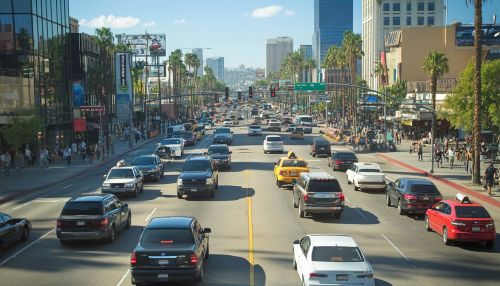Big Datas Impact on Traffic Management and Urban Planning
Introduction
The advent of big data has significantly transformed various sectors, including traffic management and urban planning. As cities grow and become more complex, the need for efficient and effective management of urban spaces becomes increasingly critical. Big data provides a wealth of information that can be leveraged to optimize traffic flow, enhance public transportation systems, and plan urban developments that meet the needs of growing populations. This article explores the impact of big data on traffic management and urban planning, examining the technologies, methodologies, and applications that are shaping the future of urban environments.
Big Data in Traffic Management
Data Collection and Sources
Big data in traffic management is primarily derived from a variety of sources, including GPS devices, mobile phones, social media, and IoT sensors. These data sources provide real-time information about traffic conditions, vehicle speeds, and congestion patterns. Traffic cameras and automated license plate recognition systems also contribute to the data pool, offering insights into vehicle movements and traffic violations.
Data Analysis Techniques
The analysis of traffic data involves several advanced techniques, such as machine learning, predictive analytics, and data mining. These techniques enable the identification of patterns and trends in traffic flow, allowing for the development of predictive models that can forecast traffic conditions. Machine learning algorithms, for example, can analyze historical traffic data to predict future congestion points and suggest alternative routes.
Applications in Traffic Management
Big data applications in traffic management are diverse and impactful. One of the primary applications is the optimization of traffic signals. By analyzing traffic flow data, cities can adjust signal timings to reduce congestion and improve traffic flow. Additionally, big data is used in intelligent transportation systems (ITS) to provide real-time traffic information to drivers, helping them make informed decisions about their routes.
Another significant application is in the management of public transportation systems. Big data enables transit authorities to monitor the performance of buses and trains, optimize schedules, and improve service reliability. Furthermore, data-driven insights can inform infrastructure investments, such as the construction of new roads or the expansion of public transit networks.


Big Data in Urban Planning
Urban Data Sources
In urban planning, big data is collected from sources such as satellite imagery, geographic information systems (GIS), and census data. These sources provide detailed information about land use, population density, and urban growth patterns. Social media and mobile phone data also offer insights into human behavior and movement within urban areas.
Analytical Approaches
Urban planners use a range of analytical approaches to interpret big data, including spatial analysis, network analysis, and simulation modeling. Spatial analysis helps planners understand the geographic distribution of resources and services, while network analysis examines the connectivity and accessibility of urban infrastructure. Simulation modeling allows planners to test different urban development scenarios and assess their potential impacts.
Applications in Urban Planning
Big data has numerous applications in urban planning, from land use planning to environmental management. One key application is in the development of smart cities, where data-driven insights are used to create sustainable and livable urban environments. For example, big data can inform the design of energy-efficient buildings, the allocation of green spaces, and the implementation of waste management systems.
In addition, big data supports transportation planning by providing insights into travel demand and mobility patterns. Planners can use this information to design transportation networks that accommodate future growth and reduce congestion. Big data also plays a role in disaster management, helping cities prepare for and respond to natural disasters by modeling potential impacts and identifying vulnerable areas.
Challenges and Considerations
Data Privacy and Security
The use of big data in traffic management and urban planning raises important concerns about data privacy and security. The collection and analysis of personal data, such as location information from mobile phones, require strict adherence to privacy regulations and ethical standards. Ensuring data security is also critical to prevent unauthorized access and misuse of sensitive information.
Data Quality and Integration
Another challenge is ensuring the quality and integration of data from diverse sources. Inaccurate or incomplete data can lead to flawed analyses and decision-making. Therefore, it is essential to implement robust data validation and integration processes to maintain data accuracy and reliability.
Technological and Institutional Barriers
The implementation of big data solutions in traffic management and urban planning can be hindered by technological and institutional barriers. These include the lack of technical expertise, inadequate infrastructure, and resistance to change within organizations. Overcoming these barriers requires investment in technology and training, as well as fostering a culture of innovation and collaboration.
Future Prospects
The future of big data in traffic management and urban planning is promising, with ongoing advancements in technology and analytics. The integration of artificial intelligence and machine learning will further enhance the capabilities of big data applications, enabling more accurate predictions and real-time decision-making. Additionally, the development of 5G networks will facilitate faster data transmission and improve the responsiveness of smart city systems.
As cities continue to grow and evolve, the role of big data will become increasingly important in shaping sustainable and resilient urban environments. By harnessing the power of big data, cities can improve the quality of life for their residents and address the complex challenges of urbanization.
